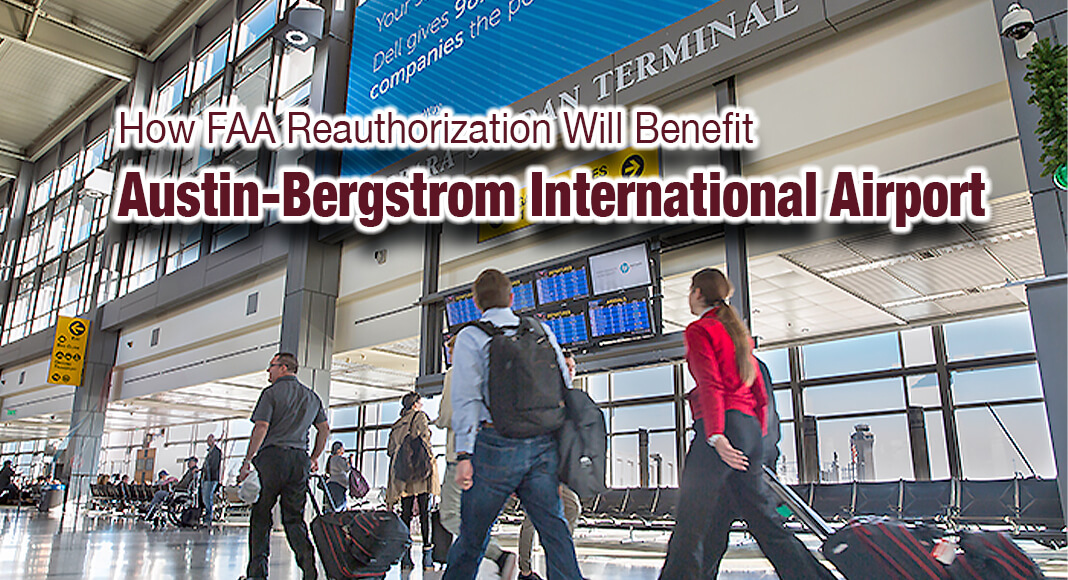
Texas Border Business
AUSTIN, Texas – U.S. Senate Commerce Committee Ranking Member Ted Cruz (R-Texas) and Ghizlane Badawi, Chief Executive Officer of Austin-Bergstrom International Airport, today hosted a press conference to highlight the passing of the FAA Reauthorization Act of 2024 into law and to highlight the impact the law will have on runway safety, air traffic control, and airport infrastructure for the Austin community.
The bipartisan FAA reauthorization, which Sen. Cruz authored along with Commerce Committee Chairwoman Maria Cantwell (D-Wash.) and was signed into law this month, contains numerous provisions that will improve safety and efficiency at Austin-Bergstrom International Airport. The law requires the Federal Aviation Administration (FAA) to hire the maximum amount of air traffic controllers, which will help address staffing shortfalls at the airport. Other provisions include:
- The establishment of a Runway Safety Council.
- Accelerated deployments of tower simulator systems.
- The requirement that the FAA identify and install additional runway surveillance technology at airports like Austin-Bergstrom International Airport.
In addition, the FAA reauthorization bill delivered a substantial increase in funding for airport infrastructure projects that will boost capacity and safety. Austin-Bergstrom International Airport will receive nearly $2 million more every year for infrastructure projects that will enhance operations at the airport.
About the significant safety improvements coming to Austin-Bergstrom International Airport Sen. Cruz said, “This bill is an historic investment into aviation and aviation safety. When you think about flying, the number one priority has to be safety. Every one of us when we get on a plane, or we put our families [on a plane] the most important question is, are we going to land safely or are kids going to be okay? We’ve seen in recent years, far too many near misses.
…
“And so, this bill makes major investments into airline safety. It directs the FAA to hire the maximum number of air traffic controllers. One of the problems leading to the rising number of near misses is a shortage of controllers. The more controllers you have there, the more you’re able to monitor traffic. That also helps with delays, as passengers are wanting to get to their destination quicker.”
FAA Reauthorization Act Delivers for the Lone Star State:
- A historic $4 billion per year in funding for airport infrastructure projects that will boost capacity and safety at airports across Texas and the nation.
- Five additional exemptions to statutory “perimeter rule,” allowing new round-trip flights to and from Ronald Reagan Washington National Airport (DCA) from locations previously excluded from direct flights. This will provide the ability for a direct flight from San Antonio to DCA, delivering a more convenient travel experience for members of the military traveling from Joint Base San Antonio, business travelers, and tourists.
- Directing the FAAto hire the maximum number of air traffic controllers. Terminal Radar Approach Control Facilities (TRACON) for both the Dallas-Fort Worth and Houston areas have been understaffed in recent years.
- A provision authorizing the creation of a Center for Advanced Aviation Technologies for new and emerging aviation technologies including for advanced air mobility and powered-lift. This center would be responsible for testing and advancing these technologies including by overseeing the development and related activities of testing corridors and other flight demonstration zones. Importantly, the Center would also work to facilitate partnerships between industry, academia, and related government agencies to further unleash innovative aviation technologies.
- An adjustment to the bill’s discretionary airport improvement program funding structures that would boost McKinney National Airport’s efforts to become the third primary commercial airport in the Dallas-Fort Worth metro area. While the terminal expansion will be primarily financed at the local level, the bill expands McKinney National’s eligibility for up to $20 million in federal funding.
- Reforms aimed at better integrating commercial space activities into the national airspace system to assist launch providers in navigating complicated airspace, a boost for Texas’ thriving commercial space industry.
- Provisions that could benefit Texas universities seeking to develop aviation-related curriculum and workforce development programs such as Texas Woman’s University and Angelo State University.
- Reforms to FAA’s State Block Grant and Infrastructure Investment and Jobs Act (IIJA) administrative funding programs that will greatly benefit the Texas Department of Transportation.
- Funding that will improve the operational capabilities for the FAA’s UAS test range managed by Texas A&M and located in Corpus Christi, Texas.
- A measure addressing the recent devastating wildfires in Texas by directing the FAA to develop a plan to better integrate the use of unmanned aircraft systems to help fight wildfires.
- A provision that will streamline approvals to allow for more drone operations for offshore oil and gas facilities in international waters.
- New guidance directing the FAA to establish a process to enable test and demonstration flights for hypersonic and supersonic aircraft making it possible that a test corridor could be established in Texas.
















